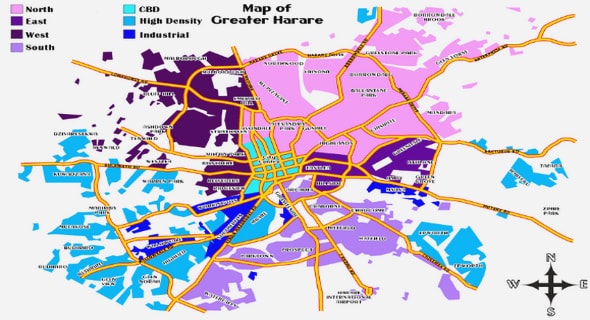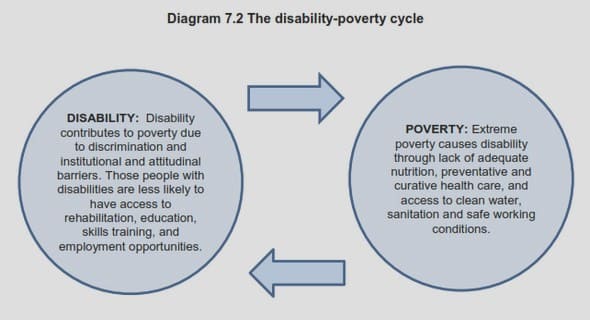Get Complete Project Material File(s) Now! »
An evaluation of coastal dune forest rehabilitation through ecological succession
Across the globe, the attainment of natural resources (such as minerals and timber) for human-use has similar consequences; namely, habitat loss, habitat fragmentation and habitat degradation (Foley et al. 2005). It is intrinsically evident that where the amount of habitat that can support biological diversity is reduced, the number of species will also decline. Habitat loss, fragmentation and transformation are thought to be one of the main threats to global biological diversity and ecosystem services (Fahrig 1997; Bender et al. 1998; Gaston et al. 2004; Goldewijk & Ramankutty 2004; Hoekstra et al. 2005). Traditional conservation practices (for example, conserving nature in parks) have not yet stemmed the tide of habitat change and species loss. Several authors have heralded the activity of ecological restoration as a potential panacea to this trend of global habitat loss (Wilson 1992; Dobson et al. 1997; Young 2000). Ecological restoration according to the Society for Ecological Restoration International (SER 2004) is “an intentional activity that initiates or accelerates the recovery of an ecosystem with respect to its health, integrity and sustainability.”
The eminent scientist E.O. Wilson believed that ecological restoration was “…the means to end the great extinction spasm…” and that “the next century will… be the era of restoration in ecology” (Wilson 1992). Ecological restoration has quickly become integral to biological diversity conservation and sustainable development, and is often a legally binding requirement of mining permission (Tischew et al. 2010). In addition to the conservation ethos, ecological restoration may be valuable to scientists who wish to test ecological theories that address the assembly of biological communities (Bradshaw 1983). Palmer et al. (1997) and Young et al. (2005) suggest that restoration ecology (the science of ecological restoration) is well equipped to address scientific questions with regard to community development, species diversity and its role in ecosystem function, seed limitation and the role of soil micro-biota in facilitating community assembly.
In addition, the role of the landscape in restoration, metapopulations, niche theory, as well as many other areas of ecology offer unique opportunities to test key theoretical questions in ecology (Young et al. 2005). However, some authors have suggested that restoration ecology is failing to live up to its potential with regard to scientific endeavour (Halle 2007; Weiher 2007). In addition, others have suggested that the conservation value of ecological restoration is overstated (Elliot 1982; Davis 2000; Katz 2003). In reality, the current practice of ecological restoration probably falls somewhere between these two polar views (panacea to an over-statement of conservation value). Ecological restoration always comes second to preservation, but it can enhance conservation (Young 2000; Rey Banayas et al. 2009).
The extent to which ecological restoration enhances conservation is probably dependent on the goals, techniques, and locale of individual projects, and perhaps the views of individual restoration practitioners. Ecological restoration is characterised by intentional actions that facilitate ecosystem recovery (SER 2004). These intentional actions implemented by managers may vary between relatively passive approaches relying mostly on natural community assembly through to management intensive approaches where species are introduced directly in to disturbed sites (Prach & Hobbs 2008). The reliance on natural community assembly has been criticised by some, as it is unpredictable and can result in multiple stable states that differ to and support less biodiversity than the pre-disturbed state (Handa & Jefferies 2000; Pywell et al. 2002; Suding et al. 2004). However, others have promoted passive approaches over technical interventions because they result in a more natural species composition and greater biological diversity (Hodačová & Prach 2003). Prach & Hobbs (2008) suggest that ecological succession is preferable to technical interventions but adaptive management can be implemented to direct succession if required. Whatever the management action taken it is important to monitor the biotic (and abiotic) responses within rehabilitating sites and to evaluate the success of the technique in ensuring progress toward stated objectives or targets.
In South Africa, the restoration target for mining companies is stipulated in the Mining and Petroleum Resources Development Act (2002; South Africa). This act states that mining companies (other land uses are not bound by this legal requirement): “…must as far as it is reasonably practicable, rehabilitate the environment affected by the prospecting or mining operations to its natural or predetermined state or to a land use which conforms to the generally accepted principle of sustainable development.” The mining company Richards Bay Minerals (RBM) initiated what is now the longest running rehabilitation programme, in South Africa in 1977. The programme aims to restore indigenous coastal dune vegetation to one third of its lease area. The mining company relies on ecological succession after ameliorating the mine tailings to accelerate initial colonisation (see below for further details).
Through this thesis, I wish to evaluate the ecological consequences of this programme for coastal dune forest. From 1977 to the present day, RBM continues to mine the minerals zircon, ilmenite, and rutile through a dredging process (van Aarde et al. 1996a). The mining process involves the clearing of dune forest and topsoil, and then dredging of the underlying sand (see Plate 1-1). After removal of the minerals from the sand, the “tailings” (the stockpiled sand that has been through the dredging process) are shaped to reform dunes. Post-mining habitat rehabilitation is directed in one of two pathways, either to commercial land-use, which has historically been commercial Casuarina equisetifolia plantations, or to indigenous coastal dune vegetation. For sites earmarked for indigenous forest rehabilitation, topsoil, seeded with annuals, is returned to the dune (Plate 1-2). Topsoil is further stabilised by wind-breaking fences (Plate 1-3). After this process, management is limited to the removal of non-native plant and animal species, and the prevention of fires. Continuous mining and subsequent restoration has resulted in a sere of regenerating patches in the landscape (van Aarde et al. 1996a, Wassenaar et al. 2005, see Plates 1-4 to 1-7). Through the amelioration of stressors associated with the establishment of species at disturbed sites and later the control of other potential disturbances (in the form of fires and non- indigenous plants and herbivores) the RBM rehabilitation programme aims to “kick-start” and facilitate the processes involved in ecological succession (van Aarde et al. 1996a).
Our previous research on the rehabilitation of coastal dune forest has been explicitly founded on the theoretical predictions of succession (for example, van Aarde et al. 1996b; Kritzinger & van Aarde 1998), and this is common in the restoration ecology literature (for example, Jansen 1999; Fagen et al. 2010; Gould In press, see also Prach & Hobbs 2008 and references therein). I have divided this thesis in to 7 chapters. In Chapters 1 and 2, I provide a general introduction and more detail on the context of coastal dune forest ecology within South Africa. In Chapters 3 through 6, I present four papers, all of which address the consequences of the use of a succession-based approach to the restoration of coastal dune forest destroyed after strip- mining. In the final Chapter, I assess the ecological consequences of the succession-based approach for the likelihood of restoration.
Table of contents :
- Abstract
- Acknowledgements
- Disclaimer
- Chapter 1 – General Introduction
- Chapter 2 – Coastal dune forest in context
- Chapter 3 – Is succession-based management of coastal dune forest restoration valid?
- Chapter 4 – Can non-native species explain patterns of convergence and deviation in the herbaceous layer of regenerating coastal dune forest?
- Chapter 5 – The role of canopy gaps in the regeneration of coastal dune forest
- Chapter 6 – Landscape composition influences the restoration of subtropical coastal dune forest
- Chapter 7 – Synthesis and an evaluation of the success of coastal dune forest rehabilitation


